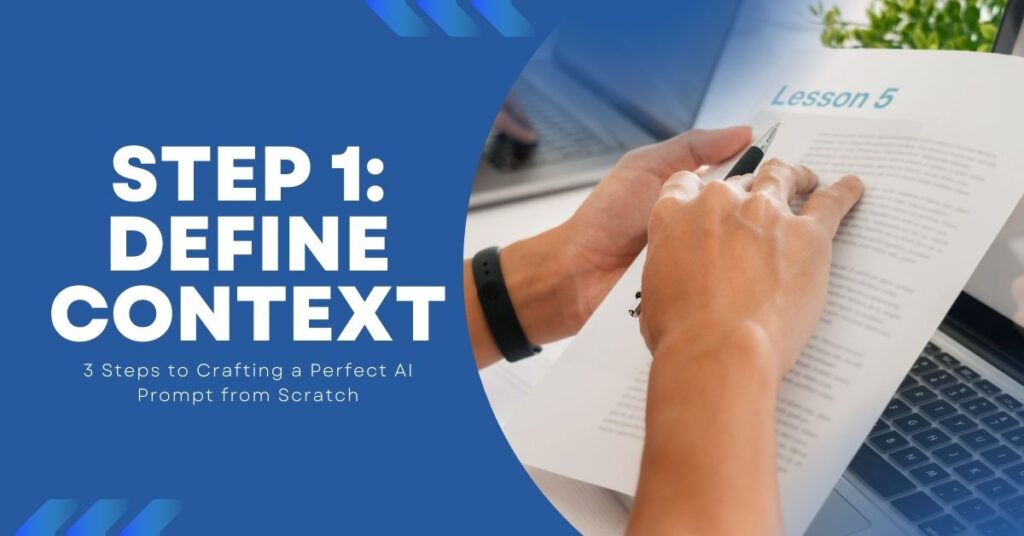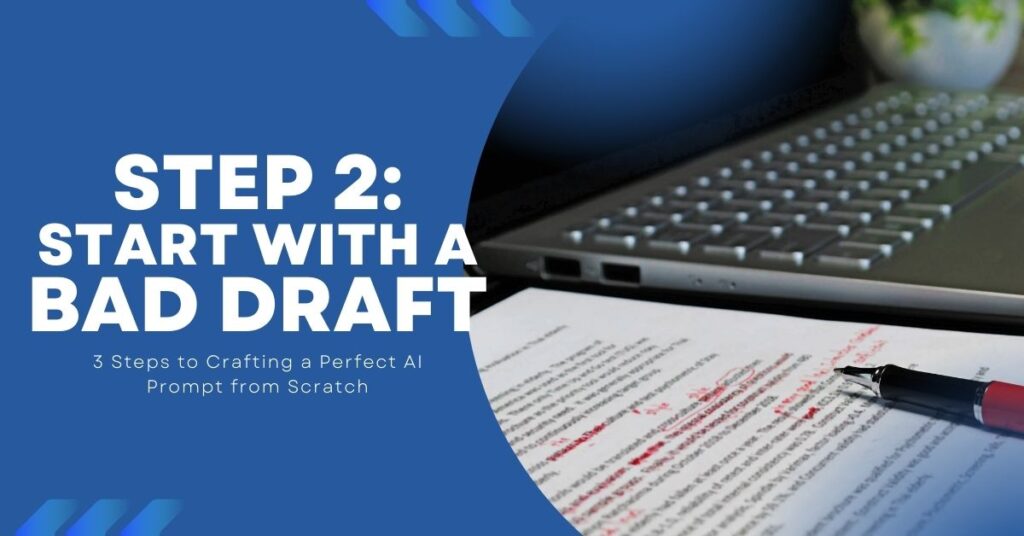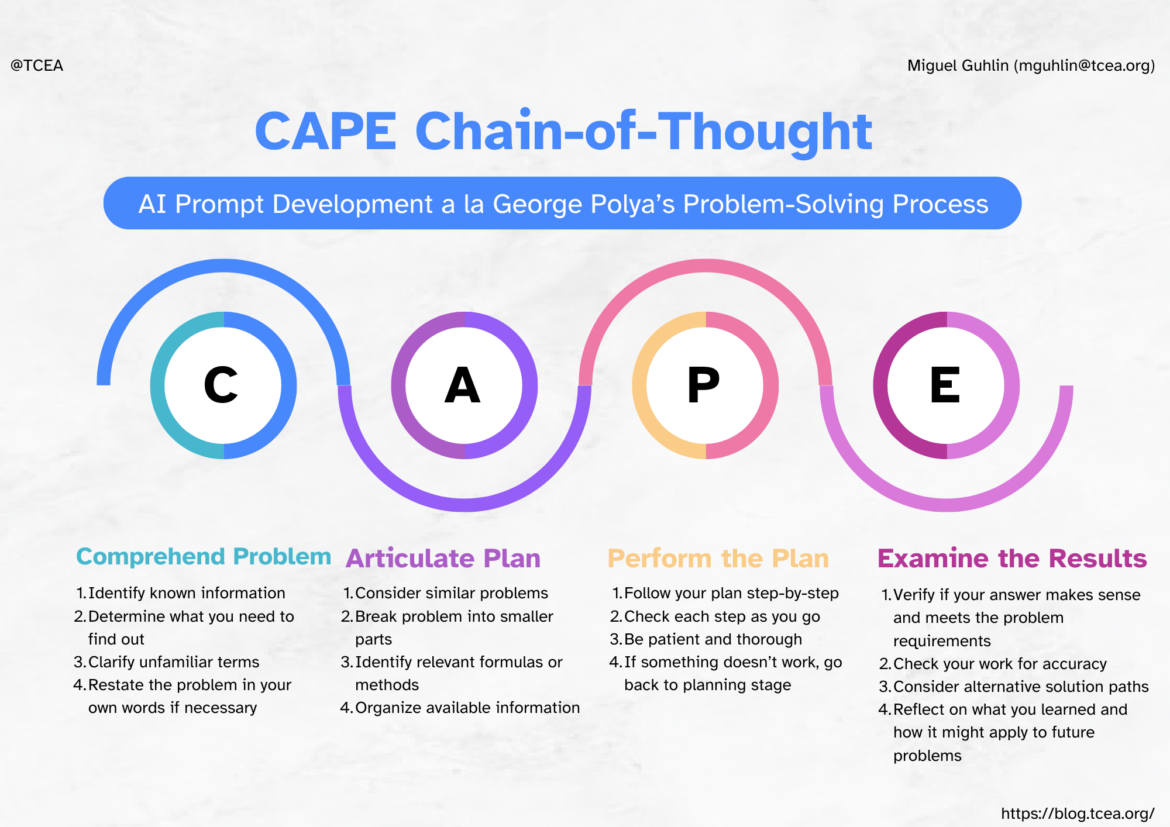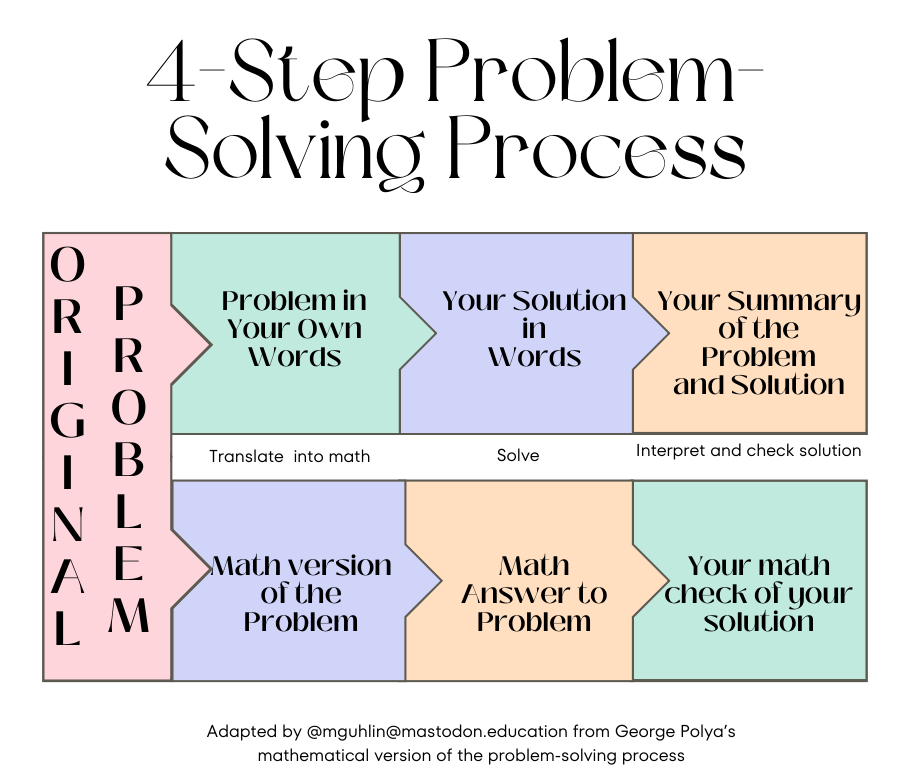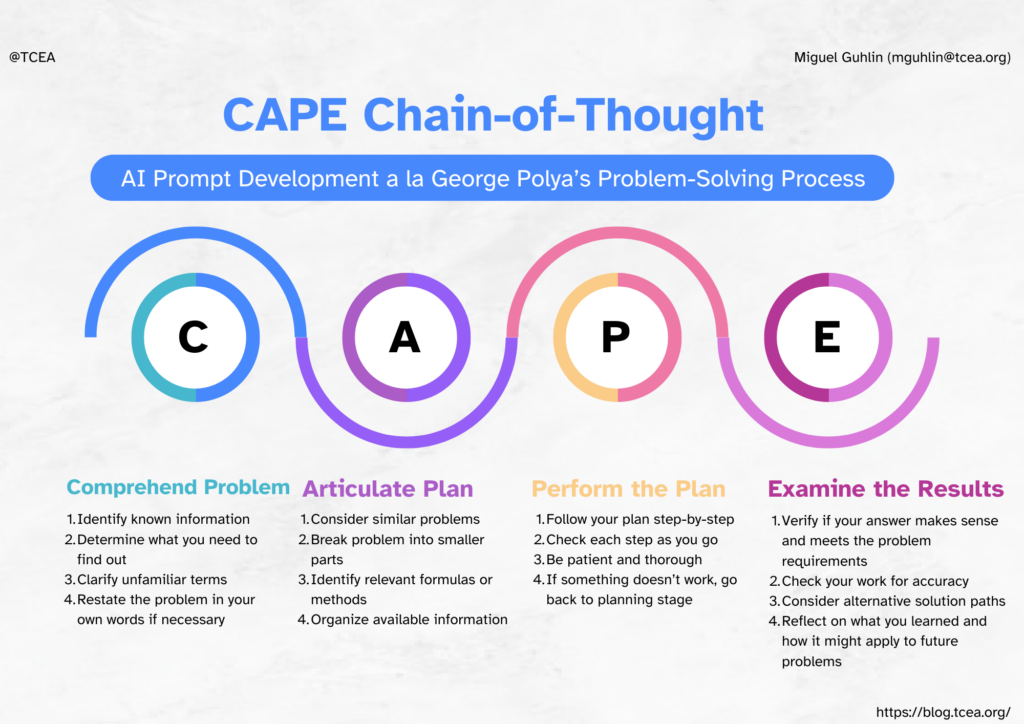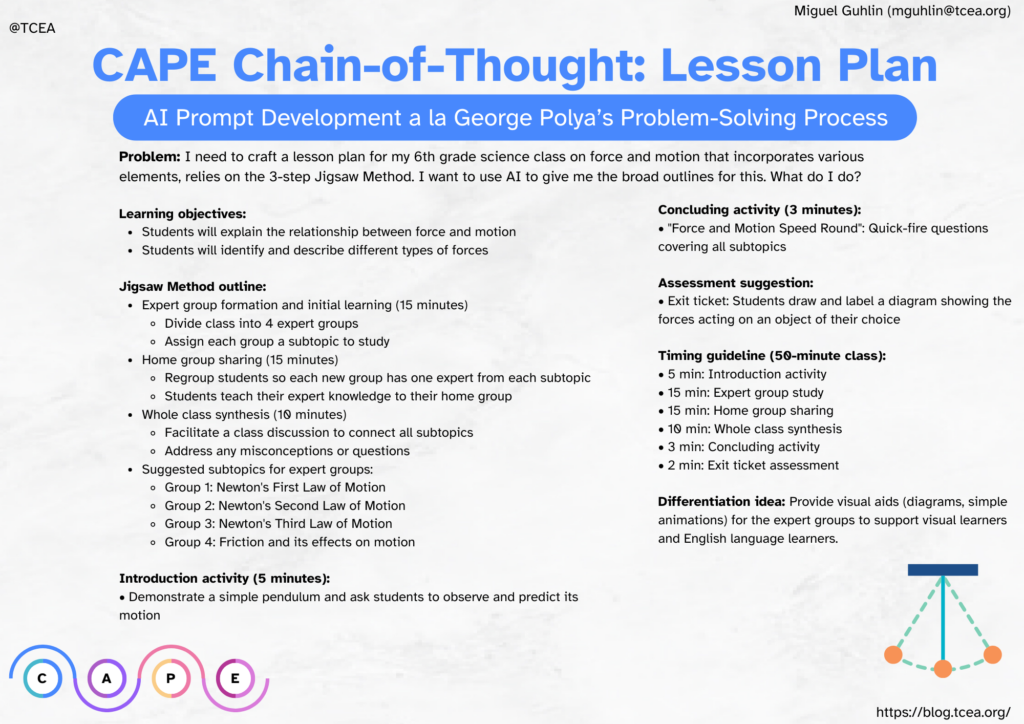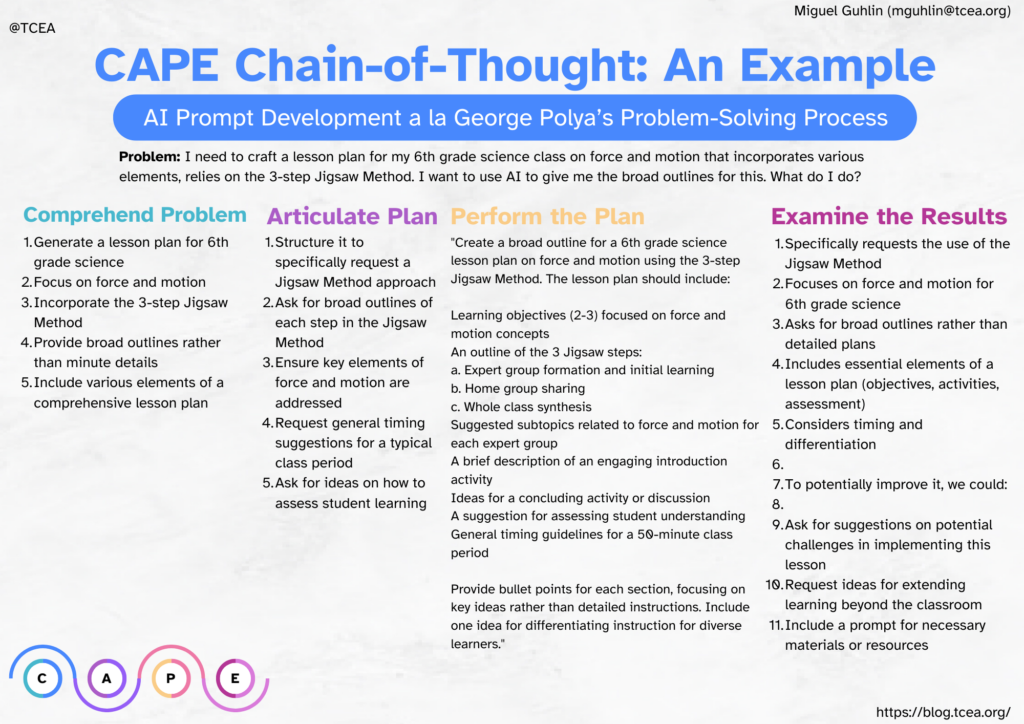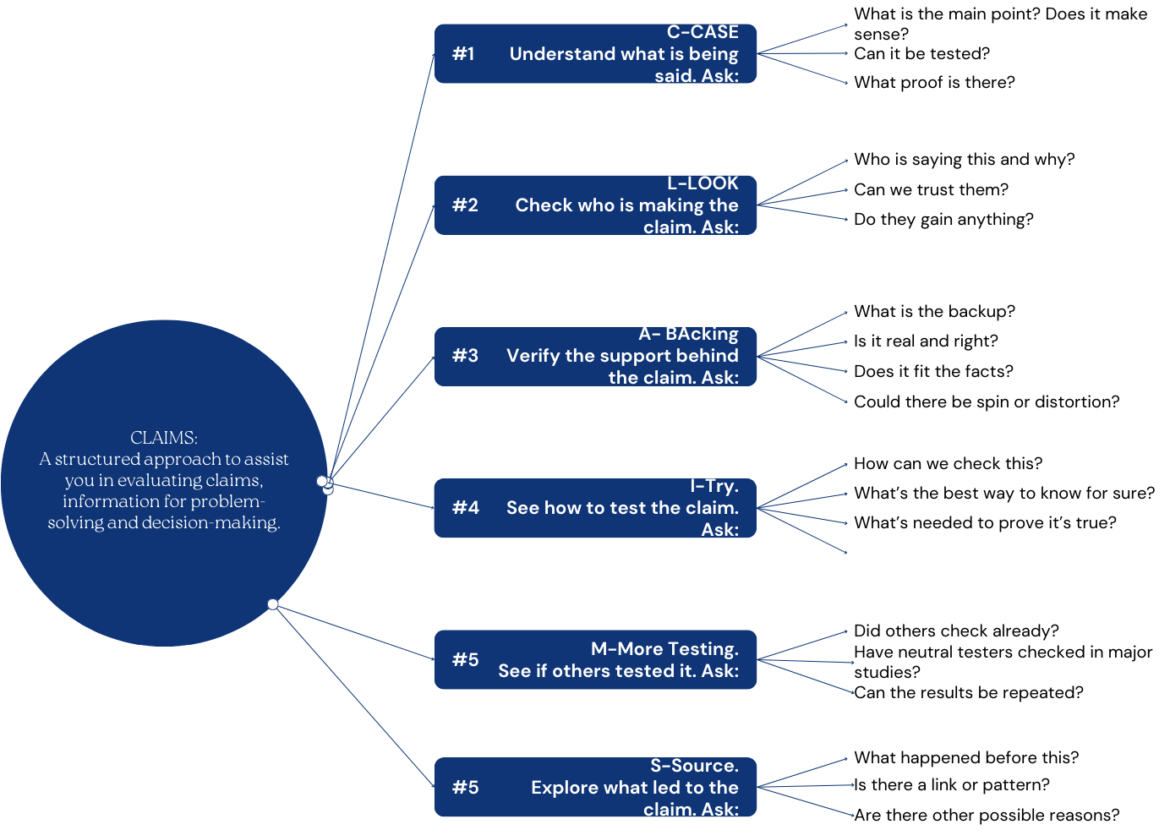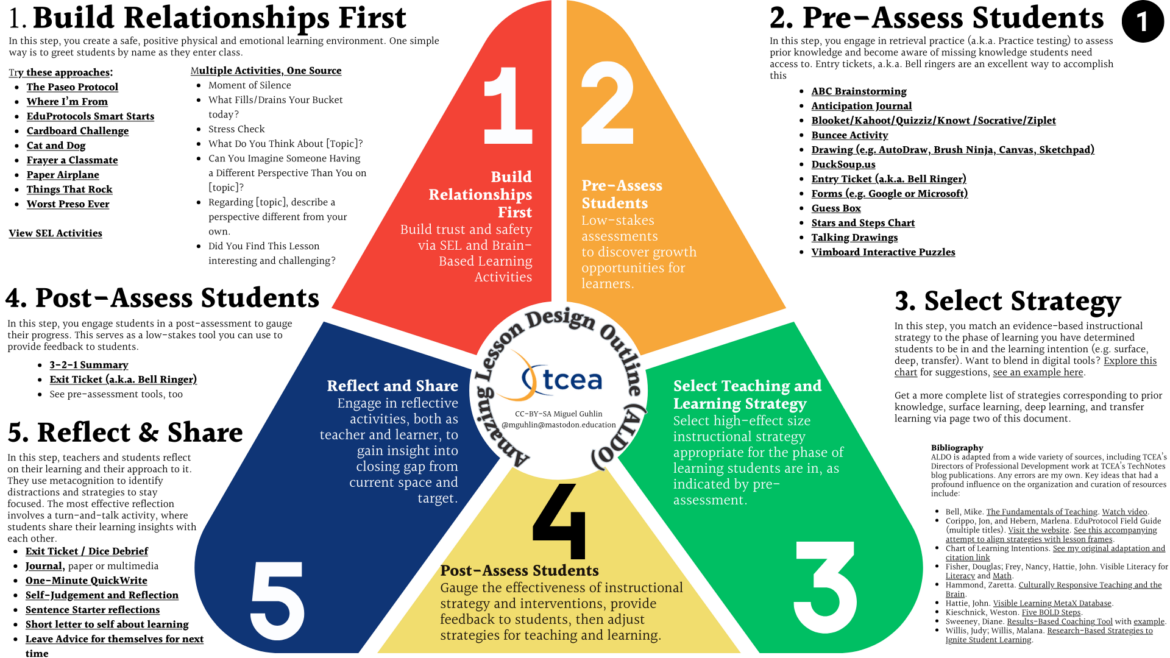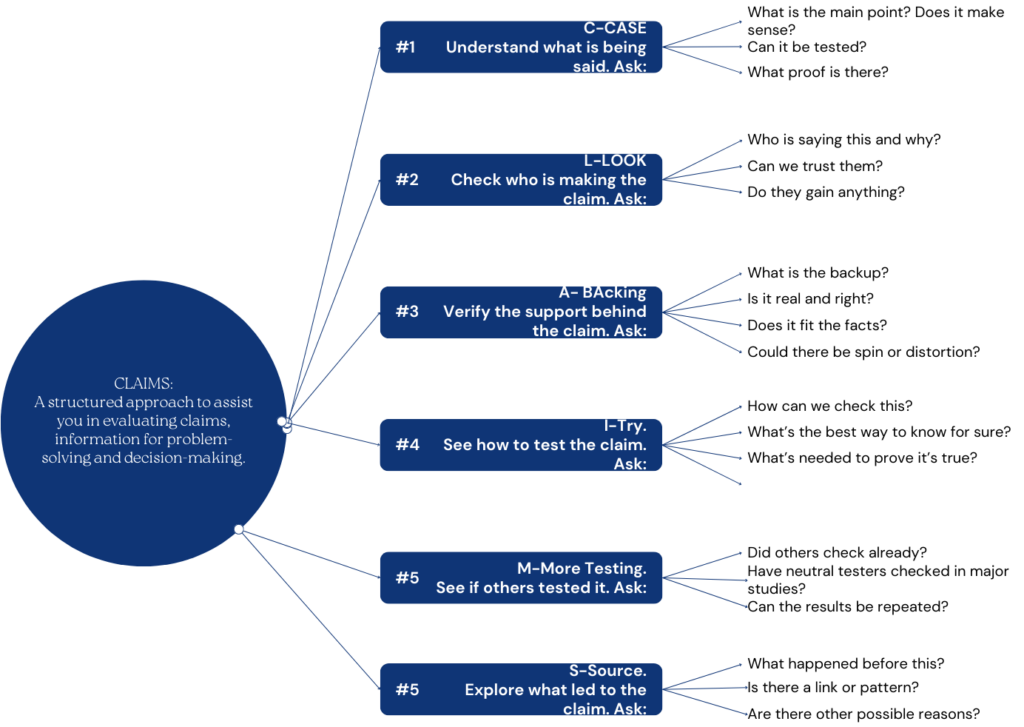We are a few years past the initial generative AI (GenAI) explosion and now have many different educational apps that include GenAI, alongside major large language models (LLMs). And, while some have dabbled in AI or even feel like a pro by now, some have yet to use it at all. No matter your experience level, now is a great time to assess where you are at and update your prompt engineering skills.
What is Prompt Engineering?
IBM defines prompt engineering as “the process of writing, refining and optimizing inputs to encourage generative AI systems to create specific, high-quality outputs.” There are three elements in a basic prompt: context, the instruction or input, and the output indicator.
Some basic prompt examples with little additional context may look like:
- Write a short story about a robot who discovers a hidden treasure in medieval times.
- Create a four by four rubric of criteria for a writing essay on the impact of World War I.
- Write a poem about oceans and mystical creatures.
But, this may not be the best way to prompt your AI of choice. If this is how you have been prompting AI in any of the apps, let’s check out how we can better communicate what we need.
Shot Prompting
There are a few types of prompts that fall under the category of “shot prompting”. A “shot” is anther name for an example. So, when you are providing your prompt, you may or may not provide examples to steer AI toward a better response. Let’s take a look at a couple of these.
Zero-shot Prompting
The first is zero-shot prompting. This prompting is straightforward and has only 1 input, which is the statement or question. You do not provide any examples. You usually use zero-shot prompting for basic responses or facts.
| Zero-shot Prompting | Examples |
| • Single input • Rely on its database • Best for general searches | • What is a large language model? • What are the current populations of the top 10 countries in 2024? |
Few-shot Prompting
There is also one-shot prompting, but we’re jumping straight to few-shot prompting. In few-shot prompting, you provide two or more examples in your input. You purposefully include examples to create a pattern so there is an optimal and specific output given.
Let’s assume for this example, you want to determine emotions based off of the input. You will first provide the directions and then some examples. You will leave the last example open for the GenAI to answer.
| Few-shot prompting | Example |
| • 2 or more examples input. • demonstrate pattern for output • for more complex tasks | Classify the statement as happy, sad, or neither. Text: I am excited to win the game. emotion: happy Text: The grass is tall. emotion: neutral Text: I miss my dad. Emotion: sad Text: It doesn’t work! emotion: ______________ |
Some examples to use include creating learning resources, writing word problems, or developing feedback to students.
Iterative Prompting
In iterative prompting, you’ll take on a more conversational style with an initial prompt statement or question and follow-up with additional questions or directives until you attain your desired output.
| Iterative Prompting | Example |
| • Builds on previous outputs given • Ask questions or provide directives refine, expand, probe, or modify | First iteration: What should I include in my teaching philosophy? I am a student teacher who is taking courses to become a teacher. Be as specific as possible. Second iteration: Provide more examples on strategies. Third iteration text: Be more concise. |
This is the style most people are probably using with GenAI.
Contextual Prompting
The last type of prompt I’d like to cover is the contextual prompt. With this prompt, you provide the necessary context to allow the GenAI to provide a very detailed and specific output based on all the information you provide in your input. In their 2023 book—The AI Classroom: The Ultimate Guide to Artificial Intelligence in Education—authors Fitzpatrick, Fox, and Weinstein devised a model to help facilitate better prompts when you are seeking a written response, easily remembered with the accronym PREP.
- P stands for Prompt It. Provide context for your request.
- Example: Create a quiz on 2-step multiplication.
- R is for Role. State the role so it knows how to approach the request.
- Example: You are an accountant who is an expert at financial fraud. Answer the questions based on the knowledge of this role.
- E means Explicit. Give it explicit instructions. Provide extra information, follow-up questions, data sets, other comparisons, articles, etc.
- Example: Create a bullet list 10 soft skills a person needs to be an educator.
- P is for Parameters. The last step defines the boundaries of the response you are eliciting.
- Example: The essay should be seven paragraphs long and in Mandarin.’
An example using the contextual prompt style would be:
You are an architect who is an expert in the field. Develop the plan based on knowledge of this career. [ROLE] You will write a design plan for a building in Arizona. [PROMPT IT] This building must comply with all state and federal laws and regulations. The plan must include the site analysis, user needs, sustainability features, spatial planning, lighting, technology integration, aesthetics, and cost analysis. [EXPLICIT] This design plan must be written formally and be between 20 to 30 pages. There should be one image of the building. [PARAMETERS]
For education:
You are an eighth grade science teacher. [ROLE] You will create a lesson plan about Earth Science. [PROMPT] The plan needs to follow the 5E model. You will be referencing the TEKS 8.9A and 8.9B. Be sure to also integrate technology for teacher and student. The student should be using technology to analyze or create. Differentiation should also be embedded. I want three formative assessments included. [EXPLICIT] The plan should be three pages in length in semi-formal tone.
Prompt Engineering is easier than you might think.
You just have to know what’s important to include in order to get your intended response. Have you tried any of these prompt engineering methods? Let us know in the comments below, or add your own tips for other readers to try!



